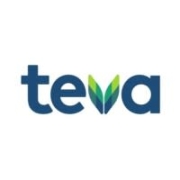What is our primary use case?
SnapLogic is a combination of API management and an ETL tool, like Informatica. You can use it as an ETL tool if you want. You can create your APIs, and manage them. You can keep it as a real-time pipeline. You can have it like a scheduled one. It has many flavors. You can try whatever you want. However, mostly we use it as a real-time scheduler.
What is most valuable?
It's a not-bad, low-code solution. You can directly pull, drag and drop. Even if you have some coding to be done, you can do it on your own. You can do it in Python. It's more developer-friendly, and development can be done at a very faster phase. Once you develop, on the fly, you can see all the data and how the data is getting transformed, and how data is available.
It's a very easy-to-use tool. Most importantly, for any new developer, if you want to onboard, it's very easy.
The initial setup is simple.
The solution has multiple dashboards.
What needs improvement?
Right now, they have reduced their window period. You will have periodical upgrades from them. Previously, the application used to be down for a while. If you have any real-time pipelines, you need a bridge which is a little costlier solution. You'd need to have a separate server for batching, due to these issues. Otherwise, it'll go down. Your scheduler, you can rerun it, however, in real-time, your business cannot wait. That means you'll maintain a separate server.
However, they have reduced this significantly, with downtime down to 15 minutes from two hours. However, if they could further reduce it, that would still be better. We'd like zero downtime in the future.
In the past two years, we have seen tremendous growth. We expect very good things in the near future.
They, however, do not have their own cloud platform for their iPaaS in the same way AWS or Azure does.
For how long have I used the solution?
I've been using the solution for around five or six years.
What do I think about the stability of the solution?
It's very stable. We run it 24/7 and it has never failed anywhere - and we use it in multiple regions, including the UK, India, and the United Arab Emirates.
What do I think about the scalability of the solution?
The scalability is straightforward. They are also like one cloud provider. They have scalability. You can do even vertical or horizontal scalability. It's flexible in that sense.
While I'm not sure exactly how many people are using the product, my understanding is that it is around 100 or so. Anyone can use it, however, mostly, it's developers, senior developers, developers, and managers.
How are customer service and support?
We have used technical support many times. We might have a unique use case where we need help from the SnapLogic team, or else there can be some bugs in the snaps, that we use to work with. This happened two years back. As of late, it's a very stable product. We don't need their interaction anymore, and we are also very much more mature here in our team. The need for them has lessened over time.
That said, while the SnapLogic technical managers are very good, the support model isn't great and should improve.
How would you rate customer service and support?
Which solution did I use previously and why did I switch?
We did use a solution previously, however, we moved in the direction of iPaaS. This product is also less costly than what we were doing before.
They have very good competition right now. I'm using SnapLogic, however, I am ultimately using ADF also, Azure Data Factory. If something is in Azure, I can use it directly in Azure, instead of pulling data from Azure, moving it to SnapLogic's cloud, and then moving it to some other place. AWS has its own iPaaS tool, which is Glue. It works the same way as Azure Data Factory. SnapLogic is in between. It can connect to any cloud.
How was the initial setup?
The initial setup is very straightforward. You just need to provision some servers. It's a UE-based tool, so you don't need to install it. Nothing is required. It's ready anytime, anywhere, any place. This is the tag which is given by SnapLogic. As it says, you just need to get your server and put the SnapLogic application inside that server.
Once it is done, you can create your number of users, and they can develop with multiple access levels, like ACL in Azure. Everything can be configured. It's very straightforward. It's not like the older days when you created a software limitation. It's an iPaaS tool, it is an integration platform as a service.
What's my experience with pricing, setup cost, and licensing?
We are using the enterprise version of the solution, however, I can't speak to how the licensing is arranged. I'm not sure if we are charged monthly or yearly or what we pay. It might be yearly and we may have a three-year contract with them.
What other advice do I have?
Quarterly, we will have a release. I don't remember the exact version number we are on. However, if there is a change, usually quarterly, they will upgrade your servers. It's almost automatic.
We have a provision where it will wait for some time. Once you give a confirmation, it'll be done. That is a hard limit, is also there. A soft limit is when they advise "Upgrade by the first of August," for example, then, by the first of August, the changes will be there, however, your system will be running in the previous version. Typically, after a week or 15 to 20 days, it'll be a hard limit. It will ask you to upgrade your system.
If a company needs to use SnapLogic, first they need to consider why they need it. If you have all your applications moving from on-premise to cloud migration, this is one of the best tools for that. You will have most of your connectivity in the cloud, and if you want to do all the transformations in the cloud, and if you need to push more data, this is the best tool.
I'd rate the solution eight out of ten.
Which deployment model are you using for this solution?
Public Cloud
If public cloud, private cloud, or hybrid cloud, which cloud provider do you use?
Amazon Web Services (AWS)
*Disclosure: My company does not have a business relationship with this vendor other than being a customer.







